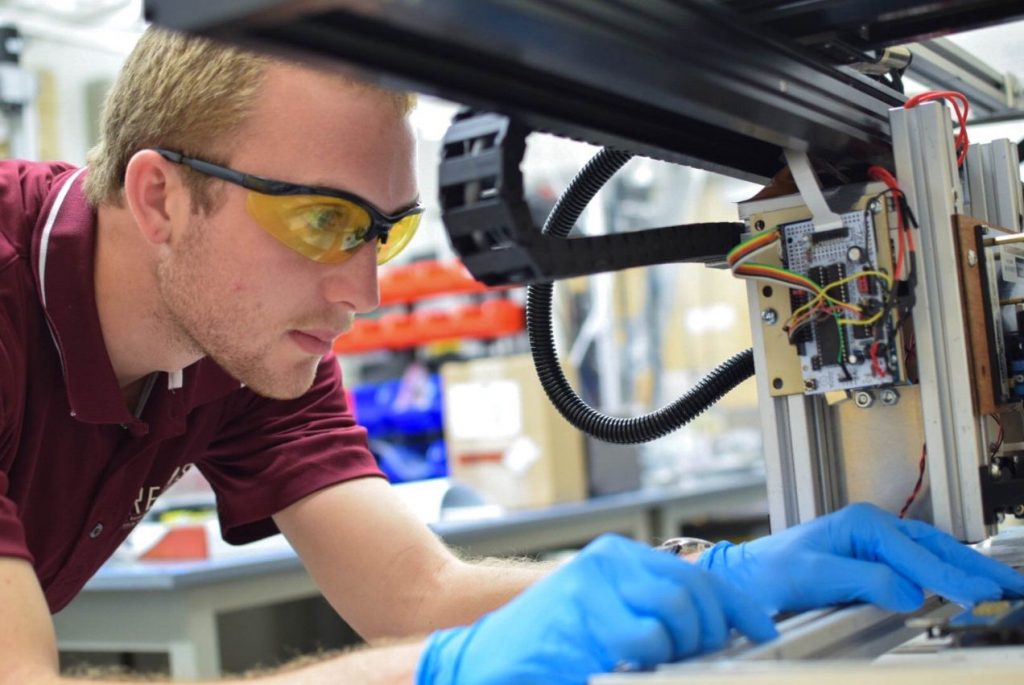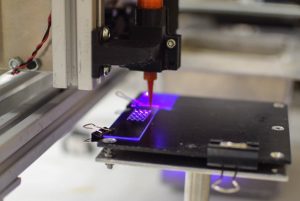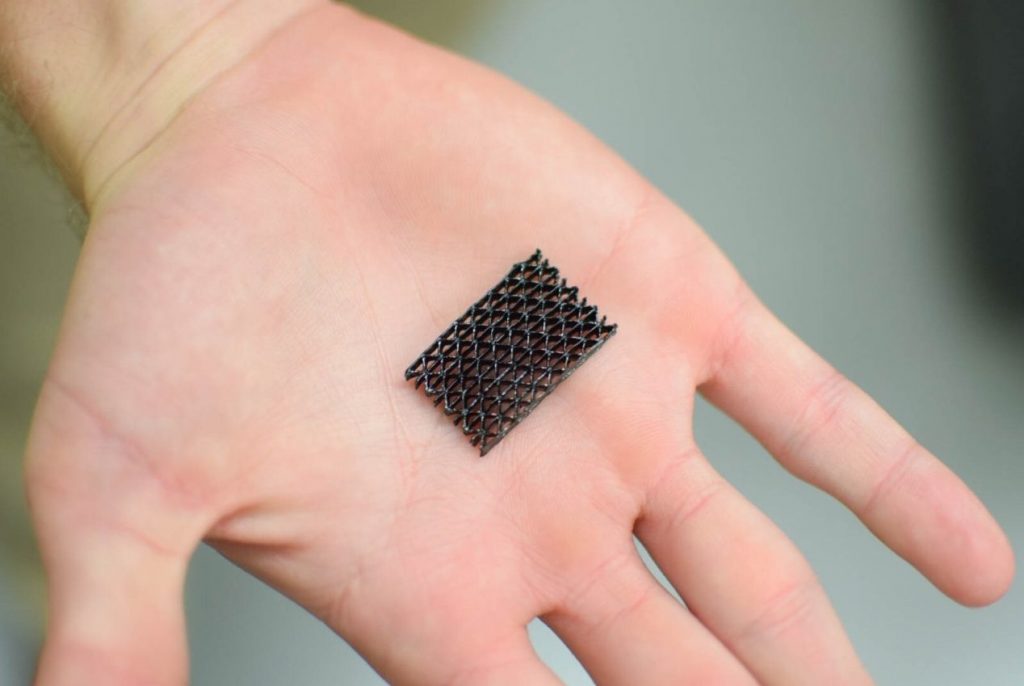
Gil Lavi is a 3D printing veteran who spent nine years at Stratasys doing regional channel management and Strategic Account Management. He then managed strategic accounts for Makerbot in Europe, was the Vice President of Sales at Roboze before becoming Head of Channel Enablement at BigRep. Gil packs a lot of channel and sales expertise as well as very deep 3D printing knowledge. For his next venture he decided not to join a company to manage its channel but to rather bring best practices in channel building and channel management to a wider audience. His company 3D Alliances helps companies built and manage global sales channel and reseller networks. This kind of an approach was new to us so we asked Gil to explain what he’s up to.
What is 3D Alliances?
“3D Alliances is a new 3d-printing consulting company that specializes in deployment and management of channel networks for 3D-printing companies. We identify and team up with companies offering unique and innovative solutions to help them ramp up their global channel network.
We also support them with:
-
Setting their go-to market business strategy
-
Training their channel management teams to excel in supporting sales partners”
Why should I have a channel as an OEM?
Channel deployment is managed today by the 3D printing companies themselves. The big players in the market (HP, SSYS, DDD, MarkForged, Formlabs ect) can afford having experienced channel managers for a minimum of 3 regions – EMEA, America and Asia. However, out of the 500 companies in the market that deals directly with developing and selling 3D printers, there are many innovative small-medium size companies (20-100 employees) that are dealing with their first or second product. Most of the employees are R&D, finance, logistics and technology people, and for sales/channel management they employee 1 to 2 people.
Where is the problem for these companies? In most cases they employ people with little experience with 3D printing channel recruitment & management since they can’t afford to pay an ex-manager from the big companies (their revenue stream is not there yet). These people have a steep learning curve and they make mistakes along the way, losing time they can’t afford. We don’t intend to replace their channel mangers, but rather help them to accelerate the process of seeking, filtering, choosing and managing their sales channels, and set the right management methodology with current partners.
What does having a channel do for a company?
Having channel partners is the model most of the 3D printing companies choose to work with, very few sell only direct. Having a channel means first of all selling demo units for each, a revenue which can be significant for small-medium size companies. Choosing strong channel partners, even in only a few leading countries, that generate healthy revenue and can help 3D printing companies get closer to their balance point (expanses ver revenue), and improve their position in their next round of investments.

Won’t having a channel mean I lose contact with the market?
On the contrary. As an example, a 3D printing company from Poland that takes on board a channel in France, can access now with the help of the channel, customers across the different industries in the country. They channel sold to these customers in the past, and already has trusted relationship with the market. This channel will know the French market much better than the 3D printing company will and beyond selling printers in the region, they can send back from the customers to the 3D printing company important inputs on their products. All of this is even more critical, for example, when it involves a 3D printing company from Korea trying to manage their business in Europe.
What makes a good channel partner?
-
Good experience in prompting, selling and supporting 3D printing hardware (several years of experience, 3-4 years).
-
Sell complimentary solutions such as CAD-CAM software’s, CNC/Milling, post processing equipment ect.
-
Already having a large installed base of happy customers where both sides trust each other
-
Can act independently in his region with minimum support needed from the 3D printing companies. Have a clear business plan how to sell each product in their portfolio.
-
Long runner and not opportunistic – willing to invest for the long run and not needing revenue in a very short time.
-
Have the resources to invest in marketing (open houses, trade shows, online campaigns) and in after sales support.
-
Have the right knowledge and understands clearly how to fit the right product to the right industries/segments/applications. For example – low cost desktop 3D printers for education institutes or high performance 3D printers and materials for Aerospace.
How do you align the interests of channel partners and OEMs for the long run?
The side of the 3D printing company – they are looking for strong and long-term channel partners that can cover the regions they would like to sell in. They are looking for trusted business partners that knows their region well, so they could rest assure they are doing a professional job in prompting and selling their products.
On the side of the channel partners – they looking for 3D printing companies that can deliver, over time, good and reliable products, can offer technical support and have the right vision to evolve with the market, meaning to continue over time to deliver new products that will answer their customer’s ongoing needs.
3D Alliances will act as an independent entity, connecting between both sides. Many mistakes are made by 3D printing companies choosing the wrong channels to resell their products (channels that don’t have the right experience, knowledge, understanding, and resources to sell their products), and mistakes made by channels that don’t check in depth the companies behind new products they wish to sell, and discover later on limitations of the product, lack of support from the 3D printing companies ect.
3D Alliances will bridge this gap and make the right fit between 3d-printing companies and 3d printing sales channels.
How will you handle working with multiple competing OEMs?
The goal of 3D Alliances, at this stage, is to pick up to 5 innovative and unique 3D printing companies that don’t compete with each other. For example – an FDM company, SLS, Metal and PCB 3d-printing company. These companies will be our customers, when the goal would be to fit each other the right channels in different regions. As of today, we have in our network over 550 3D printing resellers (channel partners) from 57 countries. They sell leading brands from professional desktop 3d printers, mid-range, to heavy production systems. So there could be a case in which we approach one channel and he would be fit and interested to sell more than one product out of the companies we are working with like SLS & FDM. So no conflict in that perspective.
What has changed since you started working in 3D printing?
I started to work in the industry back in 2006 for Objet, which later on merged with Stratasys. Back then there were no more than 12 3D printing companies in the world. Today there are over 500 companies globally. Things that changed in this period of time:
-
Innovation was, and still is, fueled mostly by small start up companies.
-
Much higher general awareness by all sides.
-
Many patents have expired, and more to come, which led to more companies in the industry, some are focused on specific segment/solution like dental.
-
Many new technologies has entered that enable to reduce costs of ownership, cost per part, increase printing speed and enable new high-performance metal replacement materials.
-
New and big players has entered the market – HP, BASF, Georg Fisher, GE and others, focusing mostly on the implementation of 3D printing in manufacturing.
-
More players in the software side – slicing software’s, design for AM, data base management ect.
What trends do you see in printers?
-
First trend – clear split between low-cost desktop printers with mostly PLA for basic concept modeling, to professional printers offering high-performance materials for functional prototyping/short run production of end-use parts.
-
Second trend – the rise of more affordable and easy to use metal 3D printing solutions. A lot of room there to grow. Out of the 500,000 3D printers sold last year, over 90% of them were desktop printers, the rest are professional/production and a small portion of that were metal.
-
Third trend – more and more solutions are focused on lower costs of ownership, lower cost per part, faster printing speed and new high-performance metal replacement materials (manufacturing)
-
Fourth trend – printers that were developed with the understanding of how they should fit a real manufacturing lines, meaning – automation, specs & standards, and software wise.
Will all desktop machines be high temperature eventually?
A clear split into (1) low-cost for education, hobby and basic concept modeling (2) affordable high performance printers with high-temp materials.
Whats your business model?
First of all, our goal as a company is to be the largest trusted global hub that connects between 3D printing companies and resellers. Our business model, as a consulting company, is to form business alliances with 3D printing companies to help them ramp up channel partners. We don’t intend to replace their channel mangers, but rather help them to accelerate the process of seeking, filtering, choosing and managing their sales channels.
What kind of resellers are you looking for?
Although we have over 550 resellers in our network, we are looking to reach out to much more that are eager to expand their portfolio over the coming years, with the understanding that their customer’s needs are constantly changing. We welcome to our network resellers that are looking to focus on 3d-printing solutions for mostly manufacturing.
And OEMs?
-
3D printing companies that offer unique and innovative solutions, mostly around manufacturing.
-
Are ready to expand globally and have the right resources and infrastructure to do so.
-
Understand the value of setting the right working plan on how to recrite and manage sales partners in the 3D printing industry.
-
Wish to accelerate their revenue stream in a competitive environment, and lay the right foundations for the business growth of their company.
What other issues are there?
In many cases they are cultural gaps between business partners, especially, for example, when an American 3D printing company would like to deploy channels in Asia, or an Asian 3D printing company would like to deploy channels in Europe. 3D Alliances will help to bridge these cultural gaps as well, that sometimes causes misunderstanding and damage the relationship between both sides.






